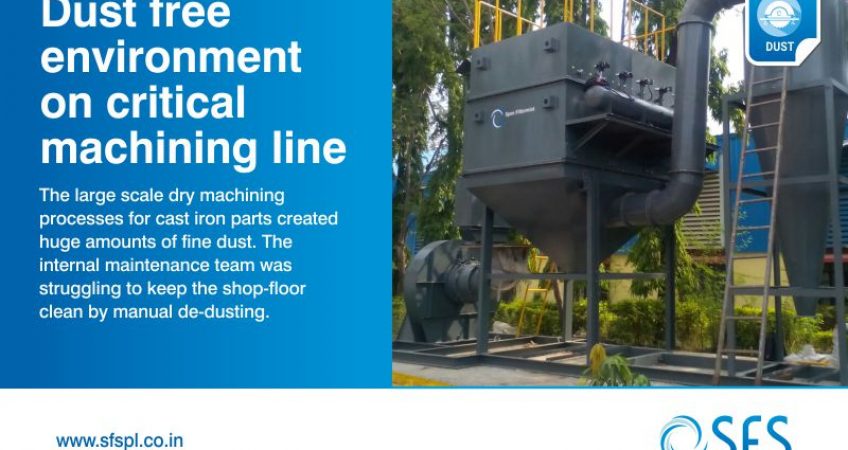The Client is a market leader in centrifugal castings. As a part of its expansion plan the Client was setting-up machining line for engine parts manufacturing for exports to Europe and the USA.
Challenge
- Consistent inhalation of fine dry dust posed severe risk to the health of operators
- Dry dust settled on the floor and premises in thick layers creating hurdles for operations
- Abrasive, fine metal dust also settled on fixtures, slides and damaged the parts
- Dry dust formation on electronic parts such as robots, present on the line, stood the risk of damage
Approach
Capturing the fine dust
During the study, SFS’s team observed that the fine dust also escaped through small gaps in the machine and emerged like a smoke. To effectively capture the fine dust, SFS’s team designed the solution that created a negative pressure near the machining area. This ensured that the air always flowed from out to in thereby preventing any escape of fine dust. The calculations for the pressure for each of the machines were decisive to the filtration performance.
Ducting design
A detail ducting layout was prepared and the dust collector was located outside the workshop. SFS’s design ensured that a perfect suction pressure was available for dust capture at the point of creation.
Solution
A cut out position was arrived at after detail calculations pertaining to ducting design, distance from each of the machining center and the volume of dust generated. SFS’s centralized system collected and conveyed the dry machining dust from each machining center to the Dust Collector.
Benefits
Lowest disturbance to operators and production processes
Most efficient suction of the dry dust at the point of creation
Easy cleaning with a maintenance friendly design

